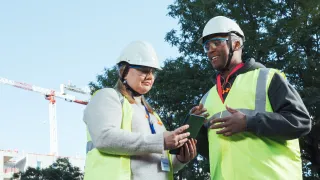Remote occupational health negotiation – new operational models and effective interaction to support work ability

Objectives
The aim of the study is to produce information on the implementation and practices of remote occupational health negotiations as part of the occupational health care service provider’s and workplace’s work ability support processes.
The aim is to describe the interaction processes and practices of remote occupational health negotiations, which can be used to involve the different parties of the negotiations in joint decision-making and to promote the presentation of different perspectives.
Data and methods
The study collects data from ten occupational health negotiations in which at least one of the key participants (employee, workplace or occupational health care representative) participates in the negotiations remotely.
The study is carried out in co-operation with occupational health care service providers and the representatives of occupational health care services act as recruiters of the negotiations in the project.
Results and impact
Based on the results of the project, a new section on the operational models of remote occupational health negotiations will be compiled for the publicly available online learning programme titled Työterveysneuvottelu - ratkaisuja työhön.
The project provides new research data on
- how remote occupational health negotiations are carried out as part of the work ability support process and
- how to promote joint decision-making and support the participation of all parties in the discussion in remote occupational health negotiations.
Our experts

Sanna Pesonen
project manager, researcher
Project partners
Tampere University
Funding
The Finnish Work Environment Fund, Finnish Institute of Occupational Health and Tampere University



